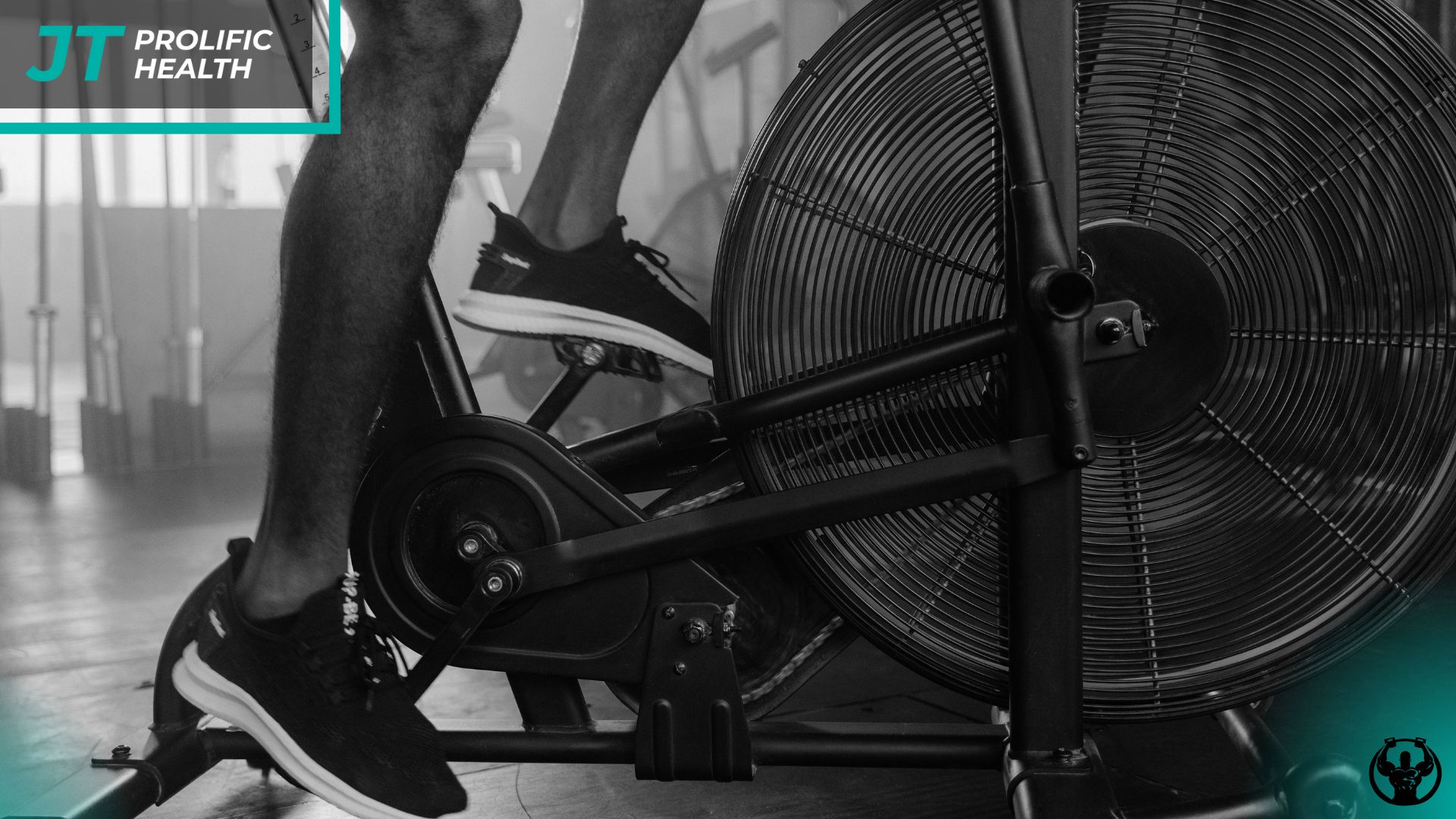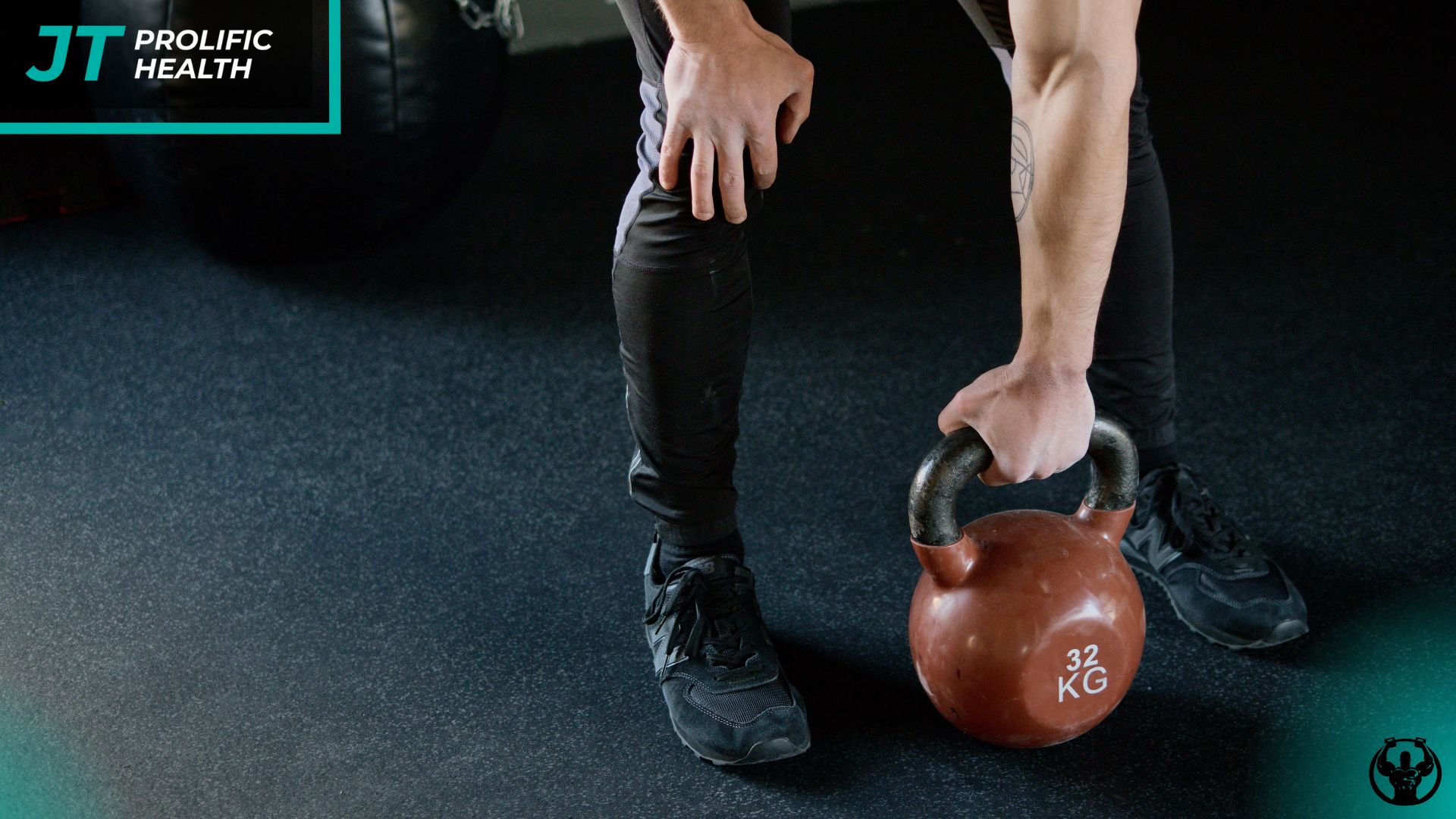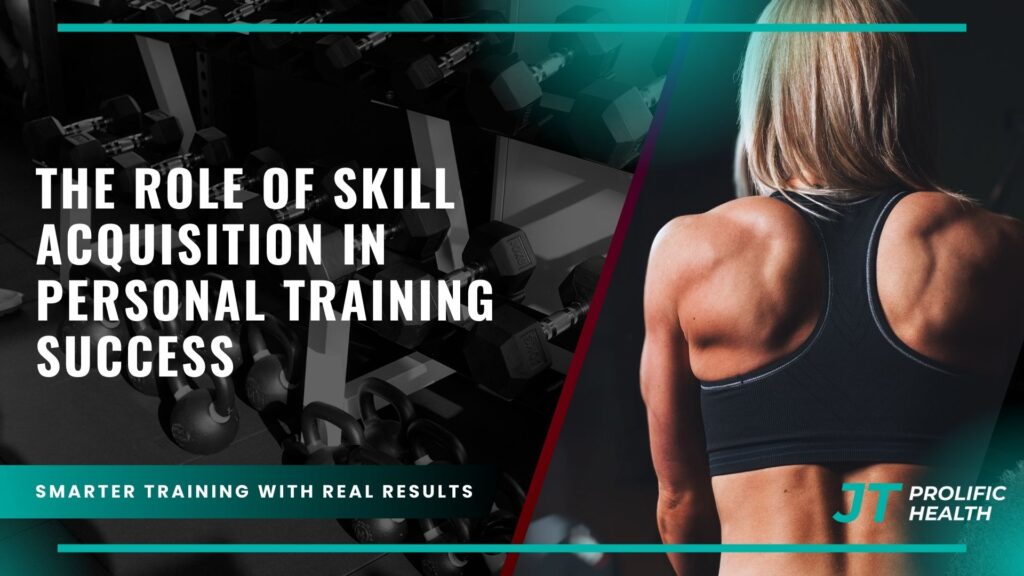IMAGE PROMPT (FEATURED): A professional personal trainer demonstrating proper squat form to a focused client in a modern gym setting, with both individuals showing concentrated expressions as they work on technique refinement, natural lighting from large windows, clean contemporary fitness environment with minimal equipment visible in background, landscape orientation
When you step into a gym or begin working with a personal trainer, you’re not just embarking on a journey to build muscle or lose weight—you’re entering a complex process of skill acquisition that will determine your long-term success in fitness. The ability to learn, refine, and master movement patterns forms the foundation of every effective training program, yet it’s often overlooked in favor of quick fixes and immediate results.
Skill acquisition in personal training extends far beyond simply learning how to perform exercises correctly. It encompasses the development of motor patterns, the understanding of proper form and technique, the cultivation of body awareness, and the gradual progression from conscious incompetence to unconscious competence. This process requires patience, expert guidance, and a systematic approach that respects the natural learning curve of the human body and mind.
The journey of skill development in fitness is unique for every individual, influenced by factors such as previous athletic experience, body mechanics, cognitive processing speed, and personal motivation levels. Some clients may quickly grasp complex movement patterns, while others require more time and repetition to develop the same level of proficiency. Understanding this variability is crucial for both trainers and clients, as it sets realistic expectations and prevents frustration that can derail progress.
Modern research in motor learning has revealed fascinating insights into how our brains acquire and retain physical skills. The process involves multiple stages, from the initial cognitive phase where every movement requires conscious thought, through the associative phase where patterns begin to emerge, to the autonomous phase where movements become fluid and automatic. Personal trainers who understand these stages can tailor their instruction methods to match their clients’ current learning phase, dramatically improving the efficiency and effectiveness of training sessions.
The implications of proper skill acquisition extend far beyond the gym walls. When individuals develop solid movement foundations and understand the principles behind effective exercise, they’re more likely to maintain their fitness routines independently, reduce their risk of injury, and achieve sustainable long-term results. This makes skill acquisition not just a training methodology, but an investment in lifelong health and wellness.
Key Takeaways
For additional context, see this comprehensive guide.
- Skill acquisition is a multi-stage process that progresses from conscious incompetence through conscious competence to unconscious competence, requiring different coaching approaches at each stage to maximize learning efficiency and retention.
- Motor learning principles such as distributed practice, variable training conditions, and appropriate feedback timing significantly impact how quickly and effectively clients develop new movement skills and exercise techniques.
- Individual differences in learning styles mean that successful personal trainers must adapt their instruction methods, using visual demonstrations, verbal cues, and kinesthetic guidance based on each client’s preferred learning modality.
- Progressive skill development builds confidence and reduces injury risk by ensuring clients master fundamental movement patterns before advancing to more complex exercises or higher intensities.
- Neuroplasticity and muscle memory work together to create lasting changes in movement quality, but require consistent practice and proper repetition to establish strong neural pathways that support long-term skill retention.
- Feedback quality and timing are critical components of skill acquisition, with immediate corrective feedback being most effective for beginners, while delayed feedback often benefits more advanced practitioners.
- Transfer of learning occurs when skills developed in one exercise or movement pattern enhance performance in related activities, making strategic exercise selection crucial for maximizing training efficiency.
- Motivation and goal-setting directly influence skill acquisition rates, as clients who understand the purpose behind each movement and see clear progress markers are more likely to invest the mental effort required for effective learning.
Understanding the Science of Skill Acquisition in Fitness

For additional context, see detailed information on this topic.
The foundation of effective personal training lies in understanding how the human brain and body work together to acquire new motor skills. Skill acquisition in fitness follows well-established principles from motor learning research, which reveals that learning physical movements involves complex interactions between the nervous system, muscular system, and cognitive processes. When a client first attempts a new exercise, their brain must process multiple streams of information simultaneously—spatial awareness, muscle activation patterns, balance requirements, and timing coordination.
The initial stage of skill acquisition, known as the cognitive stage, is characterized by high mental effort and frequent errors. During this phase, clients require significant conscious attention to perform even basic movements correctly. Their performance is typically inconsistent, and they rely heavily on external feedback from their trainer to make corrections. This stage can be frustrating for clients who expect immediate proficiency, making it crucial for trainers to set appropriate expectations and provide encouraging, constructive guidance.
As clients progress into the associative stage, movement patterns begin to stabilize, and the frequency of errors decreases significantly. The movements require less conscious attention, allowing clients to focus on refining technique and increasing consistency. This is often where clients experience their first major breakthrough moments, as exercises that once felt awkward and challenging begin to feel more natural and controlled. The role of the trainer during this stage shifts from basic instruction to fine-tuning and progressive challenge introduction.
The final autonomous stage represents the goal of skill acquisition in fitness training. At this level, movements become largely automatic, requiring minimal conscious control. Clients can perform exercises with consistent form even when distracted or fatigued, and they develop the ability to self-correct minor technique deviations. This stage enables clients to focus their attention on other aspects of training, such as intensity management, breathing patterns, or more complex movement combinations.
The Role of Motor Learning Principles in Training Design


For additional context, see our in-depth resource.
Effective personal training programs incorporate specific motor learning principles that accelerate skill development and improve retention. One of the most important principles is distributed practice, which involves spreading learning sessions over time rather than concentrating them into single, intensive sessions. Research consistently shows that clients who practice movements in shorter, more frequent sessions develop better technique and retain skills longer than those who attempt to master movements through marathon training sessions.
Variable practice conditions represent another crucial element of skill acquisition. Rather than having clients perform the same exercise in identical conditions every session, effective trainers introduce controlled variations in equipment, environment, and execution parameters. This might involve practicing squats with different stance widths, using various resistance tools, or performing the movement at different speeds. These variations force the nervous system to adapt and develop more robust motor programs that transfer better to real-world situations.
The concept of contextual interference plays a significant role in how trainers structure their sessions. When multiple skills are practiced in a random or varied order rather than in predictable blocks, clients initially perform worse during practice sessions but demonstrate superior retention and transfer when tested later. This principle suggests that the temporary confusion created by mixing different exercises or movement patterns actually strengthens the learning process by forcing the brain to work harder to distinguish between different motor programs.
Feedback timing and frequency require careful consideration in skill acquisition. While beginners benefit from immediate, frequent feedback to prevent the development of poor movement habits, more advanced clients often learn better with delayed or reduced feedback frequency. This approach encourages clients to develop their own error-detection capabilities and reduces dependency on external correction. Understanding when and how to provide feedback becomes a critical skill for personal trainers seeking to optimize their clients’ learning experiences.
The principle of specificity in motor learning suggests that skills are best developed when practice conditions closely match the intended application. For clients training for specific sports or activities, this means incorporating movement patterns and energy system demands that mirror their goals. For general fitness clients, specificity might involve practicing movements that translate directly to daily activities or long-term health objectives.
Individual Differences and Personalized Learning Approaches


One of the most challenging aspects of skill acquisition in personal training involves recognizing and adapting to individual differences in learning styles, physical capabilities, and cognitive processing speeds. Every client brings a unique combination of factors that influence how they acquire new motor skills, including their previous athletic experience, current fitness level, age, injury history, and preferred learning modalities. Successful trainers develop the ability to quickly assess these individual characteristics and adjust their instruction methods accordingly.
Learning style preferences significantly impact how clients best absorb and retain new movement information. Visual learners typically benefit from demonstrations, video analysis, and mirror work that allows them to see proper form and compare it to their own execution. These clients often respond well to anatomical explanations and movement breakdowns that help them visualize the intended muscle activation patterns. Auditory learners, on the other hand, may prefer detailed verbal instructions, rhythm-based cues, and ongoing verbal feedback during exercise execution.
Kinesthetic learners require hands-on guidance and physical manipulation to understand proper movement patterns. These clients benefit from manual resistance, assisted movements, and tactile cues that help them feel the correct muscle activation and joint positioning. Many clients exhibit characteristics of multiple learning styles, requiring trainers to employ a multi-modal approach that incorporates visual, auditory, and kinesthetic elements throughout the instruction process.
Age-related factors play a significant role in skill acquisition, though not always in the ways people expect. While younger clients may demonstrate faster initial learning rates, older adults often show superior consistency and attention to detail once they grasp fundamental concepts. Older clients may require more repetitions to establish motor patterns, but they frequently demonstrate better adherence to proper form and greater appreciation for the learning process itself. For those seeking expert guidance through this personalized approach to fitness, our comprehensive training programs address these individual learning differences.
Previous injury history can create both challenges and opportunities in skill acquisition. Clients with past injuries may initially struggle with movements that challenge previously injured areas, but they often develop exceptional body awareness and movement quality once they overcome their initial hesitations. These clients frequently become some of the most dedicated students of proper form and technique, understanding firsthand the importance of correct movement patterns for injury prevention.
Building Movement Foundations and Progressive Skill Development
The development of fundamental movement patterns forms the cornerstone of effective skill acquisition in personal training. Before clients can safely and effectively perform complex exercises or high-intensity training, they must master basic movement patterns that serve as building blocks for more advanced skills. These foundational patterns include squatting, hinging at the hips, pushing, pulling, carrying, and rotating—movements that appear in countless variations throughout comprehensive training programs.
The squat pattern exemplifies the importance of foundational skill development. A properly executed squat requires coordination between multiple muscle groups, adequate mobility in several joints, and the ability to maintain postural control throughout the movement. Clients who rush through squat learning without mastering the basic pattern often develop compensatory movement strategies that limit their progress and increase injury risk. Conversely, those who invest time in perfecting fundamental squat mechanics create a strong foundation for countless exercise variations and functional activities.
Progressive skill development involves systematically increasing the complexity, load, or speed of movements as clients demonstrate mastery at each level. This progression must be carefully managed to challenge clients appropriately without overwhelming their current skill level. A well-designed progression might begin with bodyweight movements, advance to loaded variations, then incorporate unstable surfaces or multi-planar challenges as competency increases.
The concept of movement quality versus quantity becomes crucial during skill development phases. Many clients are eager to increase weights or repetitions before they’ve truly mastered movement patterns. Effective trainers prioritize movement quality, understanding that perfect practice creates perfect performance, while imperfect practice reinforces poor movement habits that become increasingly difficult to correct over time. This emphasis on quality often requires trainers to slow down ambitious clients and redirect their focus toward technique refinement.
Functional movement screening and assessment tools help trainers identify specific areas where clients need focused skill development. These assessments reveal mobility limitations, stability deficits, and coordination challenges that must be addressed before advancing to more complex movements. By systematically addressing these foundational issues, trainers can accelerate their clients’ overall skill acquisition while reducing the likelihood of injury or plateau periods. Those interested in learning more about systematic skill development can explore our detailed approach to strength training methodologies.
The Psychology of Skill Acquisition and Motivation
The psychological aspects of skill acquisition often determine whether clients successfully develop new movement capabilities or become frustrated and abandon their training efforts. Understanding the mental and emotional components of learning physical skills enables trainers to create more supportive and effective learning environments that foster long-term success. The relationship between confidence, motivation, and skill development creates a complex dynamic that requires careful management throughout the training process.
Self-efficacy, or a client’s belief in their ability to successfully perform a task, significantly influences their willingness to attempt new movements and persist through the challenging early stages of skill acquisition. Clients with high self-efficacy approach new exercises with confidence and resilience, while those with low self-efficacy may avoid challenging movements or give up quickly when faced with initial difficulties. Trainers can build self-efficacy by setting achievable short-term goals, celebrating small victories, and providing specific, encouraging feedback that highlights progress.
The fear of failure or embarrassment can severely impede skill acquisition, particularly in group training environments or when learning movements that feel awkward or unnatural. Many clients worry about looking foolish or incompetent, which creates tension and anxiety that interferes with the relaxed focus necessary for effective learning. Creating a supportive, non-judgmental training environment where mistakes are viewed as natural parts of the learning process helps clients overcome these psychological barriers.
Goal-setting strategies play a crucial role in maintaining motivation throughout the skill acquisition process. Effective goals in this context focus on process improvements rather than outcome achievements. Instead of setting goals like “increase bench press by 50 pounds,” skill-focused goals might include “maintain neutral spine throughout deadlift movement” or “achieve full depth in squat without knee valgus.” These process goals give clients specific targets to work toward while building the technical foundation necessary for long-term success.
The concept of deliberate practice, popularized by research into expert performance, applies directly to skill acquisition in fitness training. Deliberate practice involves focused, effortful practice specifically designed to improve performance, often requiring clients to work at the edge of their current abilities. This type of practice can be mentally demanding and occasionally frustrating, but it produces faster skill development than mindless repetition or practice within comfortable zones. For clients ready to commit to this level of focused skill development, working with experienced professionals who understand the nuances of movement learning becomes essential.
Technology and Modern Approaches to Skill Development
The integration of technology into personal training has opened new avenues for enhancing skill acquisition and providing clients with more detailed feedback about their movement patterns. Video analysis tools allow trainers and clients to review exercise execution in slow motion, identifying subtle technique flaws that might be missed during real-time observation. This visual feedback can be particularly powerful for clients who struggle to understand verbal corrections or who have difficulty feeling the difference between correct and incorrect movement patterns.
Wearable technology and motion sensors provide objective data about movement quality, including joint angles, acceleration patterns, and symmetry measurements. While this technology cannot replace the expertise of a skilled trainer, it can provide valuable supplementary information that enhances the learning process. Some clients respond exceptionally well to numerical feedback and objective measurements, finding motivation in tracking their technical progress over time.
Virtual reality and augmented reality applications are beginning to emerge as tools for movement education and skill acquisition. These technologies can create immersive learning environments that allow clients to practice movements in simulated conditions or receive real-time visual feedback about their form. While still in early stages of development for fitness applications, these tools show promise for enhancing certain aspects of motor learning.
Mobile applications and online platforms have made movement education more accessible, allowing clients to review exercise instructions, watch demonstration videos, and track their skill development progress between training sessions. However, the effectiveness of these tools depends heavily on the quality of the content and the client’s ability to self-assess their movement quality accurately.
Despite technological advances, the fundamental principles of skill acquisition remain unchanged. Technology serves best as a supplement to, rather than a replacement for, expert instruction and personalized coaching. The most effective approach combines traditional coaching methods with appropriate technological tools, creating a comprehensive learning environment that addresses multiple aspects of skill development. For those seeking to experience this integrated approach to skill development, exploring options for professional guidance can provide valuable insights into effective training methodologies.
Frequently Asked Questions
How long does it typically take to master a new exercise or movement pattern?
The time required to master a new movement varies significantly based on the complexity of the exercise, individual learning factors, and practice frequency. Simple movements like basic squats might be learned in 2-4 weeks with regular practice, while complex movements like Olympic lifts can take months or years to truly master. Most clients see significant improvement in fundamental movement patterns within 6-8 weeks of consistent, focused practice.
Why do some people seem to learn exercises faster than others?
Individual differences in motor learning stem from various factors including previous athletic experience, natural coordination abilities, learning style preferences, and neurological efficiency. People with extensive sports backgrounds often have well-developed body awareness and movement vocabulary that accelerates new skill acquisition. However, everyone can improve their movement skills with proper instruction and adequate practice.
Should I focus on perfecting one exercise before learning new ones?
While developing solid foundations is important, completely mastering one movement before learning others isn’t necessary or optimal. Research suggests that practicing multiple related skills simultaneously can actually enhance learning through contextual interference. The key is ensuring you have adequate competency in fundamental patterns before progressing to highly complex or high-risk movements.
How important is it to understand the science behind exercises?
Understanding the purpose and mechanics behind exercises can significantly enhance skill acquisition for many clients. This knowledge helps with motivation, proper execution, and problem-solving when movements feel challenging. However, the depth of scientific understanding needed varies by individual—some clients benefit from detailed explanations while others prefer simple, practical cues.
What role does mental practice or visualization play in skill development?
Mental rehearsal and visualization can be powerful supplements to physical practice, particularly for complex movements. Research shows that imagining perfect movement execution activates similar neural pathways as actual movement, helping to strengthen motor programs. This technique is especially useful for reviewing proper form between training sessions or preparing for challenging exercises.
How can I tell if I’m practicing movements correctly without a trainer present?
Self-assessment skills develop over time, but beginners should be cautious about practicing complex movements without supervision. Video recording yourself, using mirrors for visual feedback, and focusing on how movements feel rather than just how they look can help. However, regular check-ins with qualified professionals remain the most reliable way to ensure proper technique development.
Why do my movement patterns sometimes get worse before they get better?
Temporary performance decreases often occur when making technique changes or learning new movement patterns. Your nervous system needs time to reorganize and establish new motor programs, during which performance may feel awkward or inconsistent. This is a normal part of the learning process and typically resolves with continued practice and patience.
How does age affect the ability to learn new movement skills?
While younger individuals may demonstrate faster initial learning rates, people of all ages can successfully acquire new movement skills. Older adults often show superior consistency and attention to detail, though they may require more repetitions to establish motor patterns. The key factors for success at any age include consistent practice, appropriate progression, and maintaining a positive attitude toward the learning process.
Conclusion
The role of skill acquisition in personal training success cannot be overstated—it forms the foundation upon which all other fitness achievements are built. When clients invest time and effort in developing proper movement patterns, they create a platform for safe, effective, and sustainable progress that extends far beyond their immediate training goals. This investment in skill development pays dividends throughout their fitness journey, reducing injury risk, improving exercise efficiency, and building the confidence necessary for long-term adherence to healthy lifestyle habits.
Understanding the science behind motor learning empowers both trainers and clients to approach skill development with realistic expectations and effective strategies. The three-stage progression from cognitive to associative to autonomous skill levels provides a roadmap for tracking progress and adjusting training approaches. By recognizing that skill acquisition is a process rather than an event, clients can maintain motivation through challenging learning periods and appreciate the gradual improvements that lead to mastery.
The integration of individual learning differences, progressive development strategies, and psychological support creates an optimal environment for skill acquisition. Modern technology offers valuable tools to enhance this process, but the fundamental principles of quality instruction, appropriate practice, and patient progression remain unchanged. Success in skill development ultimately depends on the combination of expert guidance, consistent effort, and a commitment to the learning process itself.
For individuals seeking to maximize their fitness potential through proper skill development, working with experienced professionals who understand the complexities of motor learning represents one of the most valuable investments they can make. At Prolific Health, we recognize that true fitness success begins with solid movement foundations and continues through systematic skill development that honors each client’s unique learning journey.




